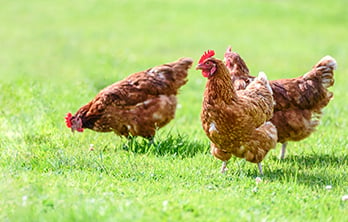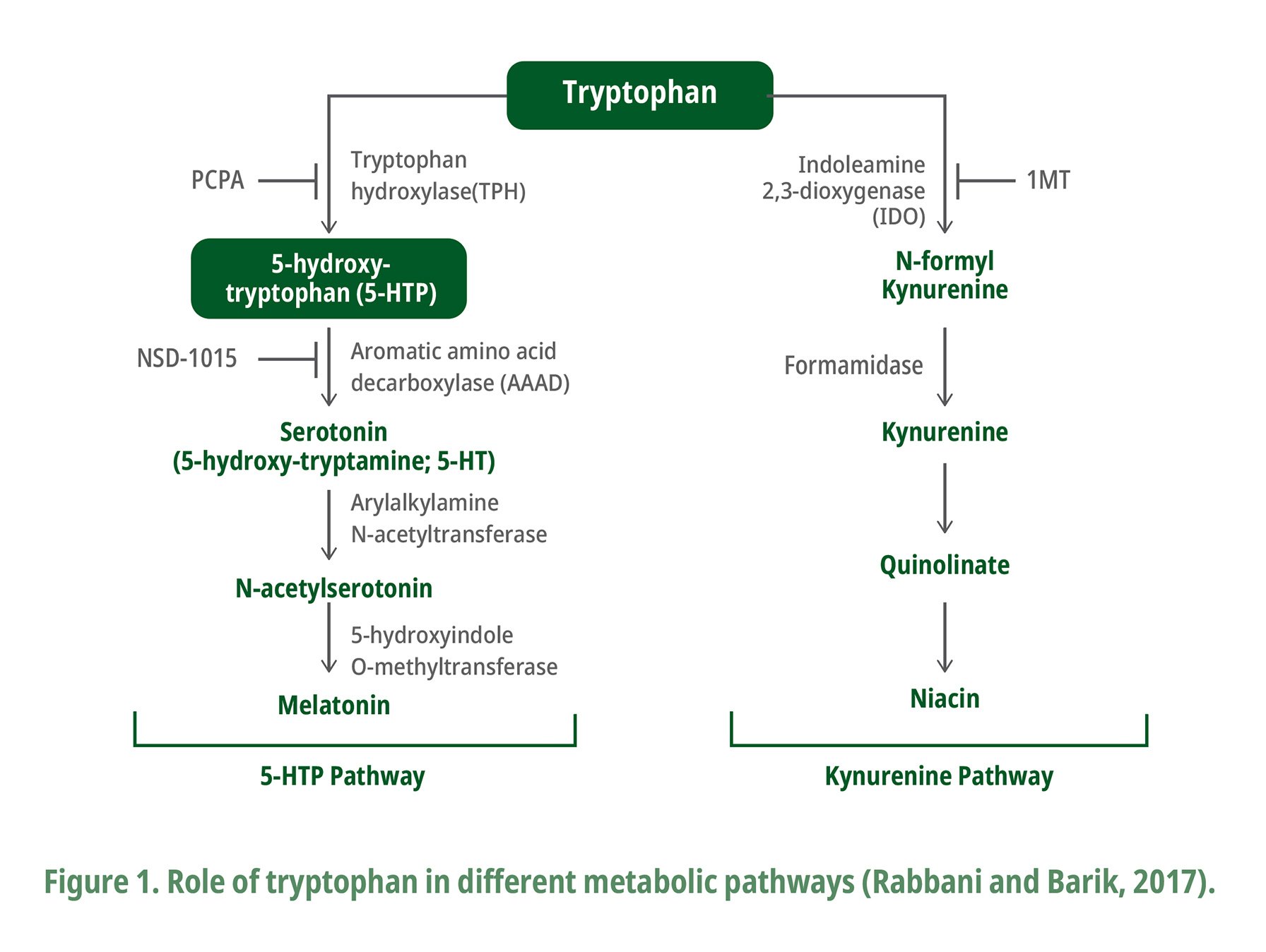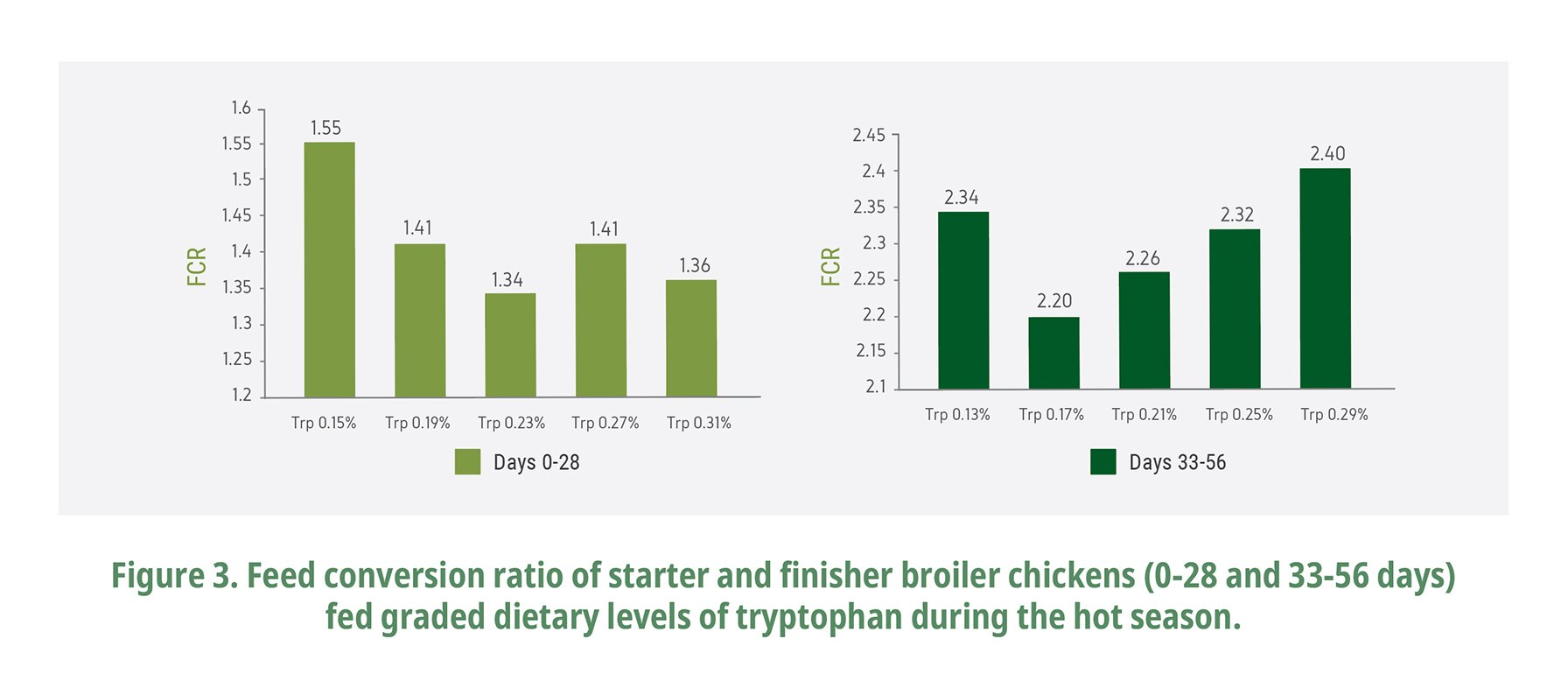Tryptophan functions and requirement in broilers reared during the hot season
2020.07.15

INTRODUCTION
Periods of high environmental temperatures can profoundly affect poultry production. Howlider and Rose (1987), Geraert et al. (1996) reported that heat stress has a negative effect on feed intake and body weight gain. Energy, protein, fat, mineral and vitamin concentrations in chicken diets are common nutritional manipulations under heat stress conditions (Sonaiya, 1989; Balnave and Oliva, 1990). However, the interaction between hot ambient temperature and dietary amino acids on the response of broilers chickens is not well defined. Shan et al. (2003) reported that on average, the tryptophan requirements of broiler chicks at 35°C were very similar to those kept at 25°C. Others reported interaction between dietary essential amino acids such as threonine and tryptophan and rearing temperatures (Dozier et al., 2000; Opoola et al., 2017).
Thus, specific nutritional requirements measured at neutral conditions may not meet the animal needs under a different condition (NRC, 1994). This deviation in requirement might be due to the genotype of birds, age and season of rearing. Ambient temperature can cause an inverse response in feed consumption; that is, the lower the temperature, the greater the feed intake and vice versa (NRC 1994). Thus, amino acid requirements (%) should be increased in warmer environments.
There are also many reports on the tryptophan requirements of chickens (Table 1); however, there is relatively little information on the influence of temperature on these requirements. Therefore, the main objective of this article is to illustrate the interaction between hot temperature and the optimal tryptophan requirement in broiler chickens.

Effect of High temperature conditions on broiler chickens
Under high temperature conditions, birds alter their behavior and physiological homeostasis seeking thermoregulation, thereby decreasing body temperature. In general, different types of birds react similarly to heat stress, expressing some individual variation in intensity and duration of their responses. A recent study of Mack et al. (2013) who showed that birds subjected to heat stress conditions spend less time feeding, more time drinking and panting, as well as more time with their wings elevated, less time moving or walking, and more time resting which eventually result in decreasing chickens performance.
Many studies have reported that heat stress has been associated with higher mortality rate, decreased meat quality, and reduced welfare status (Meitchell and Kettlewell, 1998). In a three years long study, Warriss et al. (2005) demonstrated a seasonal impact with peak mortality rates occurring in the summer months.
Tryptophan metabolism
Tryptophan is one of the essential amino acids mainly used for protein synthesis. In addition, tryptophan serves as a precursor to serotonin (a neurotransmitter), melatonin (a neurohormone), and niacin (Vitamin B3).
Serotonin is a biogenic amine which functions as: a neurotransmitter; a regulator of gastrointestinal glandular secretion, motility, and sensation; a modulator of cognition, sleep, mood, and appetite (feed intake regulation); and a mediator of a number of neurological diseases (Dennis and Charney, 1998; Irwin Lucki, 1998; Peter et al., 2007; Le Floc'h and Seve, 2007).
Melatonin is a versatile and ubiquitous hormonal molecule (Hardeland et al., 2006). It is widely distributed throughout the body, especially in the gastrointestinal tract (Konturek et al., 2007) where melatonin is produced by mucosal enteroendocrine cells. Melatonin exerts strong anti-inflammatory effects due to an inhibition of NF-kB and TNF- expression (Konturek et al., 2008).
Niacin (Vitamin B3) functions in the release of energy from carbohydrates, fats and proteins. Niacin deficiency results in poor utilization of calcium and phosphorus, which are required for normal bone formation and reduces feed intake (Leeson et al., 1979).

Effect of tryptophan on performance of broiler chickens under hot temperature
Opoola et al. (2017) has reported that a significant increase in average daily gain (ADG) as the levels of tryptophan increased from 0.15% (Trp:Lys =12%) to 0.23% (Trp:Lys =18%) and began to decline at 0.31% (Trp:Lys = 25%) in starter phase. Besides, in finisher phase, the ADG increased with increasing the levels of tryptophan from 0.13% (Trp:Lys =12%) to 0.21% (Trp:Lys = 18%) and began to decline at 0.25% (Trp:Lys = 22%). Fatufe et al. (2005) and Corzo et al. (2005) also reported that the body weight gain increases in broiler chickens receiving increasing tryptophan supply. According to Corzo et al. (2005), recommended total tryptophan needs are 2.0, 2.1 and 2.2g/kg for feed intake, body weight gain and feed conversion, respectively. The higher body weight gain as a result of extra tryptophan supply might be partly due to an increase in feed intake and/or a better balance of a dietary essential amino acid (Opoola et al., 2017). Polynomial regression showed the optimum dietary tryptophan level at 0.24% (Trp:Lys = 19%) and 0.21% (Trp:Lys = 18.4%) to maximize weight gain of broiler chicks during the hot season under tropical environment at d 0-28 and d 33-56, respectively (Opoola et al., 2017). These values are higher than 16% (Trp:Lys) estimated by Aviagen (2019). One reason for a higher tryptophan requirement in Opoola trial compare to the recommendation of Aviagen (2019) may be higher temperature conditions.


In addition, Opoola et al. (2017) reported that feed intake of broilers was increased as dietary tryptophan concentration was increased in both starter and finisher phase (Fig. 4). Tabiri et al. (2002) also showed that under high temperature, chicken fed with a lower dietary tryptophan had a lower feed intake compared to those fed with a high tryptophan diet. An increase in feed intake may partially be explained by the function of tryptophan as a precursor of serotonin which is responsible for an increased in appetite. In addition, Zhang et al. (2007) reported that tryptophan may induce ghrelin secretion, which increases the appetite and eventually result in an increased feed intake.

CONCLUSION
The optimum levels of tryptophan requirement in broiler chickens reared under hot climate condition could be set at 0.24% (Trp:Lys = 19%) for the starter phase (d 0-28) and 0.21% (Trp:Lys = 18.4%) for the finisher phase (d 33-56).























